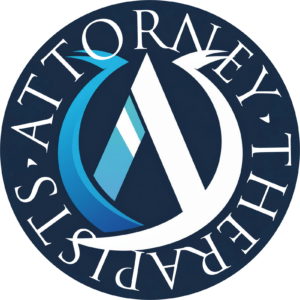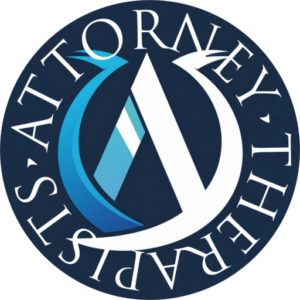Attorneys are routinely tasked with advocating for clients navigating crises under immense time pressure, often absorbing the emotional intensity of their clients’ experiences. While the legal profession traditionally valorizes resilience, emotional neutrality, and stoicism, a growing body of empirical research and clinical experience reveals that attorneys are at significant risk of vicarious trauma. This article examines the nature of vicarious trauma in legal practice, how high-stress and time-sensitive environments exacerbate this risk, and what evidence-based strategies—both preventative and remedial—can help attorneys protect and restore their psychological well-being. The article concludes by arguing for structural and cultural reforms within the legal profession to acknowledge and address this often-invisible burden.
I. Introduction
The modern legal profession is a paradox of prestige and psychological peril. Attorneys are revered for their intellectual rigor and advocacy skills, yet behind the veneer of professional success lies a mounting mental health crisis. Among the lesser-discussed but increasingly documented hazards is vicarious trauma—a condition arising not from one’s own direct experiences, but from empathic engagement with the traumatic experiences of others.
In fields such as criminal defense, immigration, family law, and civil rights litigation, attorneys work closely with individuals facing life-altering stressors—incarceration, deportation, domestic violence, or catastrophic loss. These clients often present in psychological states marked by fear, helplessness, rage, and despair. When attorneys engage deeply with such clients under strict time constraints and ethical obligations to provide zealous representation, they may experience psychological sequelae that mirror those of their clients.
II. The Nature of Vicarious Trauma in Legal Practice
A. Definition and Theoretical Framework
Vicarious trauma (VT), first conceptualized by McCann and Pearlman (1990), refers to the profound shift in worldview and psychological functioning that can result from empathetic engagement with trauma survivors. Unlike burnout or compassion fatigue, VT specifically involves cognitive distortions, changes in core beliefs, and intrusive imagery, often resembling post-traumatic stress disorder (PTSD).
In the legal context, VT manifests through:
-
Emotional numbing or detachment
-
Heightened cynicism or hopelessness
-
Difficulty setting professional boundaries
-
Changes in perception of safety, control, trust, and intimacy
-
Avoidance or over-identification with clients’ trauma
B. How High-Stress Legal Environments Exacerbate VT
The legal profession is uniquely structured to intensify vulnerability to vicarious trauma. Key contributing factors include:
-
Time-Pressured Decision Making:
Attorneys often work under court-imposed deadlines, high billing pressures, and urgent client demands. These constraints leave little time for reflection or emotional processing. -
Emotional Containment Norms:
Legal training emphasizes objectivity and detachment. Attorneys are discouraged from showing emotion or vulnerability, reinforcing internalized stigma around emotional distress. -
Repeated Exposure to Traumatized Clients:
Attorneys in certain practice areas (e.g., public defense, asylum law, child advocacy) are exposed daily to detailed accounts of abuse, violence, and injustice. -
Secondary Ethical Responsibility:
Lawyers may feel an intense sense of moral and emotional responsibility for outcomes that are often outside their control. When clients suffer, attorneys may internalize blame.
III. How Vicarious Trauma Typically Arises
VT is not the result of a single exposure but rather accumulates incrementally over time, particularly when the attorney lacks sufficient emotional support, supervision, or work-life balance. Several psychological mechanisms underlie VT:
-
Empathic Engagement:
Attorneys must often listen carefully to clients’ traumatic narratives to understand and advocate effectively. This process can blur the boundary between client and self. -
Intrusive Cognitive Processing:
Particularly graphic or emotionally charged client narratives may persist in an attorney’s mind as intrusive images or thoughts. -
Cognitive Distortion:
Attorneys may begin to view the world as unsafe, people as untrustworthy, or justice as unattainable.
VT tends to take root when emotional labor goes unacknowledged and unmanaged. Without preventive interventions or early treatment, symptoms may develop into anxiety, depression, substance misuse, and disillusionment with the profession.
IV. Psychological Buffers Against Vicarious Trauma
A. Individual Strategies
-
Mindfulness and Self-Awareness Practices:
Research demonstrates that regular mindfulness meditation can reduce symptoms of VT and improve emotional regulation. It increases meta-cognitive awareness and helps create space between experience and reaction (Baer, 2003). -
Cognitive Behavioral Techniques:
Attorneys can use cognitive restructuring to identify and challenge trauma-induced distortions (e.g., “The world is always dangerous,” or “I should have done more”). This aligns with principles of Cognitive Behavioral Therapy (CBT), which has been adapted specifically for legal professionals in CBT-L (Cognitive Behavioral Therapy for Lawyers) frameworks. -
Setting Emotional Boundaries:
Developing conscious boundaries between the attorney’s emotional world and the client’s narrative helps prevent over-identification. This includes structured intake protocols and debriefing rituals. -
Professional Support and Supervision:
Even seasoned attorneys benefit from consultation or peer supervision to process difficult cases. Attorney wellness programs, confidential peer groups, or reflective consultation with a therapist trained in legal practice can provide a crucial outlet. -
Rituals for Emotional Decompression:
Engaging in consistent post-session routines—e.g., walks, journaling, breathing exercises—can help signal closure and restore emotional equilibrium.
B. Organizational and Structural Interventions
-
Trauma-Informed Law Firm Cultures:
Law firms and public agencies should adopt trauma-informed principles, including safety, transparency, and support. This includes training for attorneys on VT, fostering open dialogue about emotional health, and normalizing mental health check-ins. -
Flexible Caseload Management:
Attorneys with heavy trauma-exposed caseloads should have the flexibility to rotate into lower-risk assignments periodically. -
Built-in Reflective Spaces:
Weekly case consultation or reflective practice meetings within firms can reduce isolation and promote meaning-making around difficult client stories.
V. Evidence-Based Treatment for Vicarious Trauma in Attorneys
Attorneys experiencing VT benefit from interventions that integrate both trauma-focused and profession-specific considerations. Empirical research supports the following modalities:
A. Cognitive Behavioral Therapy (CBT)
CBT remains the gold standard for trauma-related conditions. Its structured approach is particularly well-suited for attorneys, who often value logical frameworks and actionable tools. CBT-L (Cognitive Behavioral Therapy for Lawyers) adapts traditional CBT to address the perfectionism, high reactivity, and control-oriented schemas common in attorneys.
B. Eye Movement Desensitization and Reprocessing (EMDR)
EMDR has shown efficacy in processing vicarious trauma in first responders and may be similarly effective for attorneys, particularly those with intense somatic or intrusive reactivity to client narratives.
C. Acceptance and Commitment Therapy (ACT)
ACT helps clients relate differently to their internal experiences rather than trying to control them. This modality is particularly useful in cultivating psychological flexibility, a key buffer against VT.
D. Group Therapy and Peer Debriefing
Group-based interventions—whether clinical or peer-led—reduce shame and isolation while promoting validation and connection. Structured group therapy for attorneys can combine psychoeducation with mutual support.
VI. Conclusion: Toward a More Psychologically Sustainable Legal Profession
The unspoken expectation that attorneys must shoulder others’ trauma without emotional residue is not only inhumane—it is unsustainable. Vicarious trauma is a predictable occupational hazard in many areas of law, but it remains poorly acknowledged within legal culture. Attorneys must be equipped with tools for prevention and recovery, while legal institutions must begin to bear collective responsibility for attorney wellness.
Recognizing, treating, and ultimately preventing vicarious trauma is not a matter of individual weakness but of professional ethics. The duty to zealously advocate for clients must include the duty to sustain oneself to do so. Only then can the legal profession fulfill its highest ideals—upholding justice without eroding the very people called to deliver it.
References
-
McCann, I. L., & Pearlman, L. A. (1990). Vicarious traumatization: A framework for understanding the psychological effects of working with victims. Journal of Traumatic Stress, 3(1), 131–149.
-
Baer, R. A. (2003). Mindfulness training as a clinical intervention: A conceptual and empirical review. Clinical Psychology: Science and Practice, 10(2), 125–143.
-
Levin, A. P., Albert, L., & Soldin, S. J. (2011). Vicarious trauma in attorneys. Pace Law Review, 31(1), 245–274.
-
Pearlman, L. A., & Saakvitne, K. W. (1995). Trauma and the therapist: Countertransference and vicarious traumatization in psychotherapy with incest survivors. W.W. Norton & Co.
-
Choi, G. Y. (2011). Organizational impacts on the secondary traumatic stress of social workers assisting family violence or sexual assault survivors. Administration in Social Work, 35(3), 225–242.









